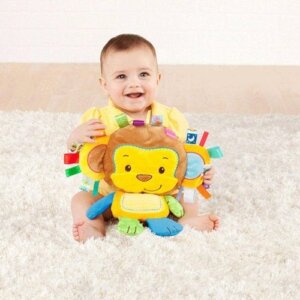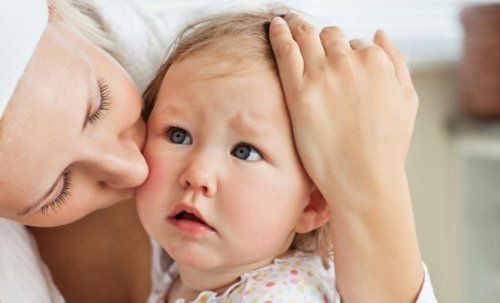The Importance of Educational Toys for Babies


Written and verified by the psychopedagogue María José Roldán
In their development, there are stages in which babies are inseparable from toys. The basic function of toys may be fun and entertainment, but manufacturers are increasingly thinking about making educational toys for babies so that they can learn while having fun. This helps children discover and develop fundamental skills.
Toys and babies
These fundamental skills include cognitive thinking, motor skills, problem-solving, language development, learning basic concepts, etc. Making toys is a creative process that seeks to make the object not only attractive but also interesting and fun for children and a good choice for parents.
Toys are more than just fun for children, most toys provide opportunities for children to learn. The best toys engage children’s senses, spark their imagination, and also motivate them to interact with others. However, parents should be mindful when choosing a toy, as they’re tailored to the developmental age of babies and children.
Babies want to explore what’s around them, and therefore, it’s important to understand emotions. As they grow older they’ll begin to develop their motor skills. Toys should be chosen carefully, as educational toys can contribute to a healthy improvement both physically and psychologically in little ones.
You might be interested in: Water Toys for Your Baby’s Bath Time
The importance of educational toys for babies

Developing social skills
Social skills are probably the most important. Babies should be prepared to explore the environment and be able to understand their own and others’ emotions. Educational toys that can interact with others can help babies begin to socialize.
Cognitive skill progression
Cognitive skills include memorization, problem-solving, learning basic concepts, etc. It’s also essential for children to begin learning basic notions such as colors or numbers. Children can achieve these cognitive skills through the use of different educational toys.
Language enhancement

Interaction with other people encourages children to express their feelings. They begin to be able to use language and speak correctly. Fortunately, modern manufacturers can make toys that talk and prove to be good examples for the use of language, although of course, children need direct interaction with people to develop their communicative abilities.
Ideally, talking toys should be chosen to teach the names of things or to get children interested in words. But one shouldn’t lose sight of the fact that although educational toys are of great importance in the development of babies, it’s human contact that really helps them grow and develop optimally.
Keep reading: A Mother Is Her Baby’s First Toy
Improving motor skills
Toddlers need to develop muscle skills and balance as they prepare to explore the environment. They have a tendency to try toys and play with them to move major body parts, including fingers, legs, hands…and even to walk along with their toys.
Growing logic and imagination
Toys help children use their imagination and develop their creativity. However, they’ll also need to use logic and critical thinking in order to have fun with educational toys. They’ll learn to recognize their environment and foster awareness of it.
Toys can be fun and educational at the same time, but it’s up to parents to choose the most appropriate toys for each case. When parents choose the right educational toys according to the age of their baby or young child, they’ll be promoting their physical and mental growth in a healthy way.
Researcher Carmen Trigueros affirms that a toy must be fun. If it’s not fun, it can’t be qualified as a toy. At the same time, a good toy must have educational potential, didactic potential, therapeutic potential, and positive values.
However, a toy’s an empty instrument until its didactic potential is put into practice.
Because, “intrinsically, a toy is neither educational nor didactic, a toy is a toy. But it’s in the uses that are made of it and in the orientation that adults can give to its use that it can be qualified as educational or didactic”.
In their development, there are stages in which babies are inseparable from toys. The basic function of toys may be fun and entertainment, but manufacturers are increasingly thinking about making educational toys for babies so that they can learn while having fun. This helps children discover and develop fundamental skills.
Toys and babies
These fundamental skills include cognitive thinking, motor skills, problem-solving, language development, learning basic concepts, etc. Making toys is a creative process that seeks to make the object not only attractive but also interesting and fun for children and a good choice for parents.
Toys are more than just fun for children, most toys provide opportunities for children to learn. The best toys engage children’s senses, spark their imagination, and also motivate them to interact with others. However, parents should be mindful when choosing a toy, as they’re tailored to the developmental age of babies and children.
Babies want to explore what’s around them, and therefore, it’s important to understand emotions. As they grow older they’ll begin to develop their motor skills. Toys should be chosen carefully, as educational toys can contribute to a healthy improvement both physically and psychologically in little ones.
You might be interested in: Water Toys for Your Baby’s Bath Time
The importance of educational toys for babies

Developing social skills
Social skills are probably the most important. Babies should be prepared to explore the environment and be able to understand their own and others’ emotions. Educational toys that can interact with others can help babies begin to socialize.
Cognitive skill progression
Cognitive skills include memorization, problem-solving, learning basic concepts, etc. It’s also essential for children to begin learning basic notions such as colors or numbers. Children can achieve these cognitive skills through the use of different educational toys.
Language enhancement

Interaction with other people encourages children to express their feelings. They begin to be able to use language and speak correctly. Fortunately, modern manufacturers can make toys that talk and prove to be good examples for the use of language, although of course, children need direct interaction with people to develop their communicative abilities.
Ideally, talking toys should be chosen to teach the names of things or to get children interested in words. But one shouldn’t lose sight of the fact that although educational toys are of great importance in the development of babies, it’s human contact that really helps them grow and develop optimally.
Keep reading: A Mother Is Her Baby’s First Toy
Improving motor skills
Toddlers need to develop muscle skills and balance as they prepare to explore the environment. They have a tendency to try toys and play with them to move major body parts, including fingers, legs, hands…and even to walk along with their toys.
Growing logic and imagination
Toys help children use their imagination and develop their creativity. However, they’ll also need to use logic and critical thinking in order to have fun with educational toys. They’ll learn to recognize their environment and foster awareness of it.
Toys can be fun and educational at the same time, but it’s up to parents to choose the most appropriate toys for each case. When parents choose the right educational toys according to the age of their baby or young child, they’ll be promoting their physical and mental growth in a healthy way.
Researcher Carmen Trigueros affirms that a toy must be fun. If it’s not fun, it can’t be qualified as a toy. At the same time, a good toy must have educational potential, didactic potential, therapeutic potential, and positive values.
However, a toy’s an empty instrument until its didactic potential is put into practice.
Because, “intrinsically, a toy is neither educational nor didactic, a toy is a toy. But it’s in the uses that are made of it and in the orientation that adults can give to its use that it can be qualified as educational or didactic”.
All cited sources were thoroughly reviewed by our team to ensure their quality, reliability, currency, and validity. The bibliography of this article was considered reliable and of academic or scientific accuracy.
- Montero, M. M., & Alvarado, M. D. L. Á. M. (2001). El juego en los niños: un enfoque teórico. Revista educación, 25(2), 113-124. https://revistas.ucr.ac.cr/index.php/educacion/article/view/3585/3494
- Payà Rico, A. (2014). Juego, juguete y educación en la pedagogía española contemporánea. Espacios en blanco. Serie indagaciones, 24(1), 0-0. http://www.scielo.org.ar/pdf/eb/v24n1/v24n1a08.pdf
- Ramos, Y. H. T., Villena, V. R., & Fernández, S. F. T. (2016). Los juguetes como medio de desarrollo del niño de la primera infancia. Atenas, 1(33). https://www.redalyc.org/journal/4780/478049736011/478049736011.pdf
- Trigueros, C. (2002). Reflexiones acerca del juego. Lecturas, Educación Física y Deportes, Revista Digital, 46. https://www2.ulpgc.es/hege/almacen/download/42/42948/reflexiones_acerca_del_juego.pdf
This text is provided for informational purposes only and does not replace consultation with a professional. If in doubt, consult your specialist.








